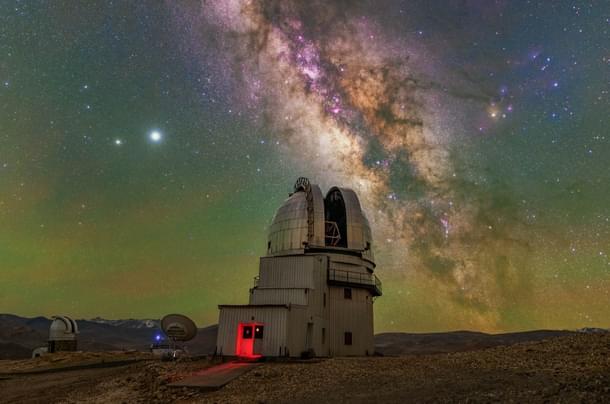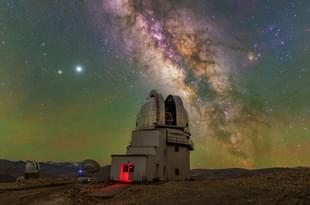News Brief
India’s Himalayan Chandra Telescope Completes 20 Years Since ‘First Light’
Karan Kamble
Sep 21, 2020, 05:48 PM | Updated Sep 22, 2020, 01:22 PM IST
Save & read from anywhere!
Bookmark stories for easy access on any device or the Swarajya app.


Tucked away in the northernmost part of the country, and not far from the current India-China conflict areas, an Indian telescope is marking an important milestone this week.
The Himalayan Chandra Telescope, housed within the Indian Astronomical Observatory at Ladakh, completes 20 years in operation on the intervening night of 26-27 September.
“It was the first time it saw light and detected a signal,” says Dr Anupama G C, the professor-in-charge of the facility at the Indian Institute of Astrophysics (IIA).
For two decades, the 2-m diameter optical-infrared telescope at this high-altitude IIA outpost has been scanning the night sky in search of a variety of astronomical objects and events and helping produce important scientific research.
“One of the major areas of focus with the telescope has been transients,” says Dr Anupama.
“Transients” is short for transient astronomical phenomena — events in the universe that are extreme and short-lived. They emerge and fade away quickly.
One example of transients is the supernova — the explosive last breath of a star as it passes away. The Himalayan Chandra Telescope is employed in search of this brilliant event that briefly outshines even the galaxy in which it resides.
The telescope is used to make observations of extrasolar planets — planets that orbit stars other than our Sun. Closer home, it looks for comets and asteroids whizzing around in our solar system. It is even used to identify the electromagnetic counterparts of gravitational waves, whose observations have proliferated since the first detection in 2015 of a black hole merger.
For these observations, research groups are not required to go to Ladakh. They operate the telescope remotely from a control centre in Hoskote, Karnataka.
However, a small crew of IIA’s caretaker engineers are stationed in Hanle year-round for the upkeep of the observatory.
Hanle is a cold and dry desert at an altitude of over 4,000 m with few people inhabiting the region. For the stark picture that this may paint, it supplies excellent conditions for probing the universe. The cloudless skies and low atmospheric water vapour are especially beneficial.
This is evident from the research output of the telescope over the years — some 20 PhD theses and publication of at least 280 academic papers. With the crossing of this milestone, the promise of scientific discovery with the Himalayan Chandra Telescope remains as bright as the objects and events that it goes after in the sky.
Here’s to a crown jewel of Indian astronomy.
(Featured image by Dorje Angchuk, engineer at Indian Astronomical Observatory, Hanle)
Karan Kamble writes on science and technology. He occasionally wears the hat of a video anchor for Swarajya's online video programmes.





